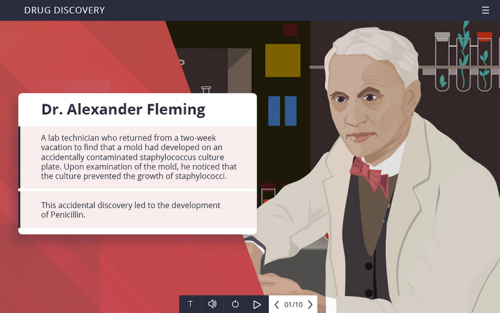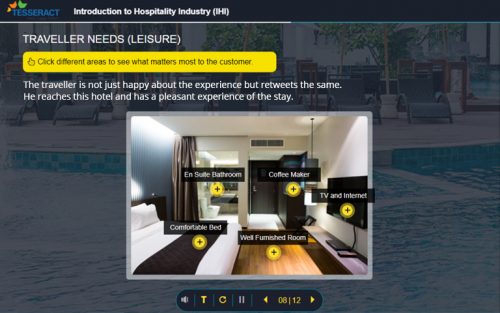Wondering what story-based learning is and how good Storytelling In eLearning can engage learners in a meaningful way today? Check all facts on story-based learning and explanations on how good Storytelling In eLearning can engage learners.
Story-Based Learning: How Good Storytelling In eLearning Can Engage Learners In A Meaningful Way
The impact of good stories in eLearning or any form of learning need not be emphasized more thanks to their successful adoption over the years. In this article, I will share few examples of good storytelling in the context of eLearning.
Can Quality Storytelling In eLearning Engage Learners?
“Long time ago in a faraway galaxy…”, as soon as you read or hear this, the expectation levels rise, and you would expect a grand story of epic proportions to unfold. From ages, good stories have made their presence felt in the minds of people and when used as a tool for education, they have been very effective in driving the point across and making learning memorable.
However, stories need to be written well and should fit the context well. Stories that are not relatable or that are not addressing a problem or have no clear connection with what is being taught can ruin the experience of learning. In custom learning, story-based learning methodology is an effective mode of teaching.
The Impact Of Storytelling In The Learning Process
Good stories even if told with simple graphics or animation can be a far better engagement tool than say a complex gamification strategy especially when you are looking to quickly deploy a course and at a reasonable cost. Even in popular games such as Assassins Creed or Age of Empires, stories are used to arouse the interest of the players. When the player starts a campaign using an avatar of say Chengiz Khan, the campaign milestones have short stories of Chengiz Khan’s childhood, his upbringing, the way he united the tribes, and the strategies that he employed to conquer various lands. This is done using illustrations backed by a booming and an accented voice-over (adding to the realism and fun element). I have seen this approach working in many strategy games.
In this article, we will cover a few examples of how storytelling or story-based learning was interwoven seamlessly with the custom learning content and made the required impact. In each of the given case-studies, the learners gave positive feedback and appreciated the way in which the course was built.
Let’s look at the examples or cases now:
Case 1: Drug Discovery
The process of drug discovery is a complex process. The client wanted their employees to be sensitive and aware of the process at a macro level. New joiners who were not from the R&D team were not aware of the time it takes for a drug to be discovered, tested and released to the market after the necessary approvals from the federal agencies.
We created a short course starting with short stories on how new drugs were discovered during ancient days and during the middle ages as well as recent times. The stories introduced talked about the “aha” moments as well as bitter disappointments that come about when the drugs are released to the market and fail. During earlier times drugs were not tested thoroughly and were introduced to the public. Some of the drugs caused reactions for which the companies had to pay a heavy price.
These stories set the context for the actual course, where the learner understood why it is necessary for a drug manufacturer to thoroughly test the drug on rats or mice before testing it on humans. After the story, the course had the decision tree activities to ensure that learners get the required perspective on the time taken to discover the drug. Thus story-based learning was quite effective in this instance.

Case 2: Hospitality Industry
When we develop courses for the hospitality industry, we need to remind ourselves that the learner group is often enthusiastic and service oriented and hence they need a strong emotional connection to go through the courses. What’s better than a storytelling approach in order to create such an impact?
For a hospitality services company, we recommended storytelling approach to set the context for the course. The story involved a person who was traveling and was unable to book a room in a hotel he wanted to stay. He tweeted about it and expresses his frustration. Immediately after his tweet, another hotel in the same area tweets back saying that we will be happy to host you.
The traveler is not just happy about the experience but retweets the same. He reaches this hotel and has a pleasant experience of the stay. On his way back to his home, he shares photographs and his good experiences on his Facebook account creating further mileage for the hotel. He also recommends the hotel by giving a 5-star rating to it on the travel website.
The story set the tone for the course saying that in today’s digital age, how a small gesture from a service provider can go a long way in enhancing not only its reputation but ensure repeat footfalls. The course was about various trends and use of technology in the hospitality industry. Story-based learning was seamlessly interwoven in the teaching process.

In A Nutshell
We have looked at 2 case studies on using storytelling or story-based learning effectively for building a course. Hope you have enjoyed it and that you will give me your valuable feedback on the article.
Custom Courses With The Storytelling Approach
At Tesseract Learning, our Instructional Designers constantly look at ways in making courses engaging and meaningful. We use a variety of techniques, with storytelling being one of them. We find storytelling to be quite universal, though we need strong support from the SME’s to help blend the story with the main content. Without SME support, we will not able to provide the right contextualization. As you know, communication is always a two-way street.
We use LXD or learning experience design in a way that the courses we build are useful and meaningful to our audiences.









